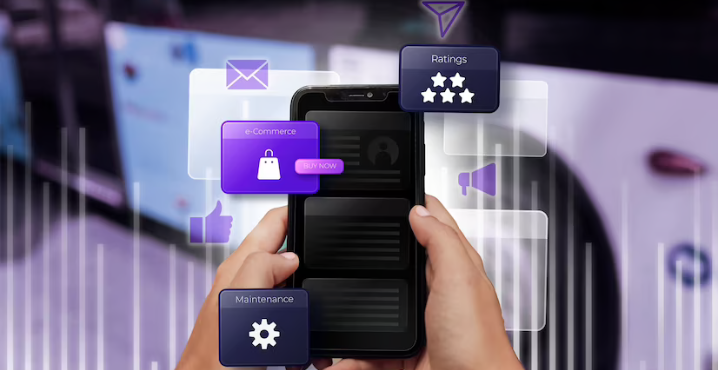
Unveiling the Secrets of Hybrid App Security: Protecting Your Cross-Platform Applications from Cyber Threats!
For hybrid applications, putting security first is essential for several reasons. First, hybrid apps create a complex and interconnected environment by combining both on-premises and cloud-based components. The application is made vulnerable to more potential attacks as a result of this integration.
Second, sensitive data, such as customer or confidential corporate information, is frequently associated with hybrid apps. Failure to maintain hybrid app security can result in data breaches, which compromise privacy and undermine confidence. Thirdly, hybrid applications utilize a variety of platforms, frameworks, and APIs, each of which has unique security requirements. The overall security posture may have weaknesses if you do not address these issues. Security flaws can also cause organizations to suffer monetary losses, legal repercussions, and reputational harm.
Major Challenges for Hybrid Application Security
Securing hybrid applications presents several challenges that organizations need to address effectively. Some of the major challenges include:
Integration Complexity
The combination of on-premises and cloud-based components in hybrid systems makes the security architecture more difficult. The attack surface is widened by integrating many systems, platforms, and APIs. This makes it difficult to maintain uniform security policies throughout the hybrid environment.
Data Protection
Intelligent property, financial data, and customer information are all sensitive data that hybrid apps frequently handle. It can be difficult to ensure data privacy and compliance with pertinent laws (such as GDPR or HIPAA). Especially when data is traveling across various contexts.
Identity and Access Management
It is difficult to manage user identities and access across hybrid settings. It entails maintaining consistent access controls, synchronizing user credentials, and implementing robust authentication procedures. To prevent unauthorized access, it is essential to integrate various identity and access management systems.
Threat Detection and Monitoring
Applications that use both on-premises and cloud infrastructures must be continuously monitored for threats. Monitoring operations, spotting security incidents, responding to them, and gathering and analyzing logs and events can all be challenging.
Patch and Vulnerability Management
Application frameworks, APIs, and third-party software are frequently used in hybrid applications. To address known security vulnerabilities and guard against possible exploits, it is essential to ensure prompt patching. Also, vulnerability management across the hybrid environment can help.
These are the major security challenges hybrid application development services come across. They need to deploy robust security measures to deal with these challenges. Let us have a close look at the best practices that protect your cross-platform applications from cyber threats…
Ways to Ensure Hybrid App Security
Protecting cross-platform apps from cyber threats requires a multi-layered approach. This approach must include both preventive and reactive measures. Here are some important steps to enhance the security of hybrid apps:
Secure Coding Practices
Implement secure coding techniques right away, including output encoding, parameterized queries, and input validation. Observe the security recommendations and best practices for the programming languages and frameworks utilized in the creation of cross-platform apps.
Regular Updates and Patching
Keep all components and libraries used in the app up to date with the most recent security upgrades. This includes operating systems, frameworks, plugins, and any third-party dependencies. Review and implement security upgrades often to fix known vulnerabilities.
Encryption
Protect sensitive data by using effective encryption techniques both during transmission and while it is stored. Use SSL/TLS or other secure encryption technologies to communicate with the backend servers from the app. Ensure that sensitive data is encrypted on the device and use safe storage methods.
Authentication and Authorization
Put strong authentication measures in place to guarantee that only users with permission can access the app and its resources. To increase hybrid app security, use robust and multi-factor authentication techniques. Limit user access to sensitive data and user privileges by implementing appropriate authorization measures.
Secure Communication
Deploy HTTPS and other security protocols to establish secure channels of communication between the app and the backend servers. In order to guard against man-in-the-middle attacks, verify server certificates. Avoid sending private information through unprotected methods.
Code Obfuscation
Make it more difficult for attackers to reverse engineer the app’s code and find vulnerabilities by using code obfuscation techniques. Business logic, algorithms, and sensitive information can all be protected by obfuscation.
Runtime Protection
To recognize and stop runtime assaults like code injection, code modification, and reverse engineering, implement runtime protection methods. You can detect and mitigate such dangers with the aid of methods like code signing, anti-debugging, and code integrity checks.
Regular Security Testing
To find app flaws and vulnerabilities, perform frequent security audits and penetration tests. Moreover, to find and fix security problems, do static and dynamic code analysis, vulnerability scanning, and penetration testing.
By following these steps and adopting a proactive security mindset, you can ensure hybrid app security against cyber threats.
Additionally, you must educate app users about security best practices. These practices include choosing strong passwords, avoiding suspicious links or downloads, and being cautious while sharing sensitive information. An aware user is less likely to get breached.
Praveen Joshi
Praveen is a seasoned IT Solutions Leader and Director at RSK Business Solutions, a technology-driven IT Consulting Company that specializes in Bespoke Software Development, Agile Consulting, Mobile App Development, Smart Sourcing, and much more. For the last 17 years, he has been delivering quality custom IT solutions that help businesses achieve their goals.

 Share
Share Post
Post Tweet
Tweet Copy
Copy

